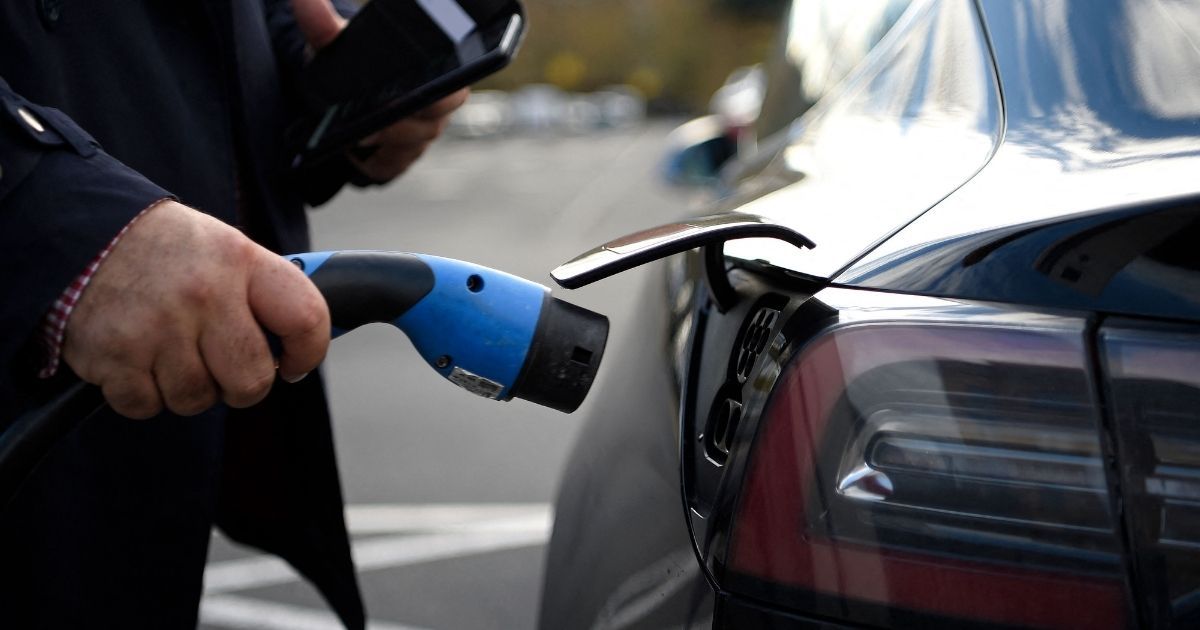PoliticalChic
Diamond Member
1. That is......unless you already know that Democrats/Leftists/Progressives lie about everything....
Perhaps you've noted the 50 or so lies and hoaxes they purveyd since and including Russia Collusion and the Wuhan Red Death.
2. "Auto Expert Uncovers Hidden Truth About EV Range Claims - Owners Should Be Seething
These vehicles can put in some serious miles on a single charge — and the government’s building more charging infrastructure along the highways every day.
Neil Winton, however, says that’s a load of hooey. Winton is an auto industry analyst and senior contributor to Forbes. He says that while EVs may look ideal if you’re just going by the manufacturer’s spec sheet, the real-world performance of these cars is very different than what’s promised when it comes to range.
3. .... the range you get could be, in real-world scenarios, up to 32 percent less than what’s promised. That’s the biggest deviation Winton found when he looked at 20 different EV models in a test published Tuesday. (The big loser was the Mini Electric, which had a WLTP range claim of 145 miles but could only muster 98.5 given real-world battery capacity.)
In one case — the Polestar 2, manufactured by Volvo’s performance brand — Winton’s test results found drivers would only get about 40 percent of the advertised range.
Why? Well, if “you drive at normal cruising speeds with the air conditioning on, the media system doing its stuff and the heater making you snug,” it’s a drain on the battery that the manufacturer didn’t figure in when it calculated the vehicle’s range numbers.
4. EVs do worse than advertised on the highway for a number of reasons. For starters, electric motors are far more efficient in stop-and-go driving conditions than during highway driving, partially because of regenerative braking; EVs use the friction caused when you slow your car down to recharge the battery. Braking doesn’t happen much during highway driving, however, which is why the advertised range drops precipitously.
Then there’s the matter of cruising speed on the highway — and the fact it’s almost always higher than the legal limit, no matter where in the world you are.
5. Some automotive journalists are slowly discovering this dark secret, as well.
Last month, a Wall Street Journal writer described a hellish road trip she took in a brand-new Kia EV, which ended with her spending more time charging the car than sleeping; not only did the vehicle’s battery deplete more quickly than advertised, charging times were much slower than expected."

 www.westernjournal.com
www.westernjournal.com
Sooooo......you like walking?????
Perhaps you've noted the 50 or so lies and hoaxes they purveyd since and including Russia Collusion and the Wuhan Red Death.
2. "Auto Expert Uncovers Hidden Truth About EV Range Claims - Owners Should Be Seething
These vehicles can put in some serious miles on a single charge — and the government’s building more charging infrastructure along the highways every day.
Neil Winton, however, says that’s a load of hooey. Winton is an auto industry analyst and senior contributor to Forbes. He says that while EVs may look ideal if you’re just going by the manufacturer’s spec sheet, the real-world performance of these cars is very different than what’s promised when it comes to range.
3. .... the range you get could be, in real-world scenarios, up to 32 percent less than what’s promised. That’s the biggest deviation Winton found when he looked at 20 different EV models in a test published Tuesday. (The big loser was the Mini Electric, which had a WLTP range claim of 145 miles but could only muster 98.5 given real-world battery capacity.)
In one case — the Polestar 2, manufactured by Volvo’s performance brand — Winton’s test results found drivers would only get about 40 percent of the advertised range.
Why? Well, if “you drive at normal cruising speeds with the air conditioning on, the media system doing its stuff and the heater making you snug,” it’s a drain on the battery that the manufacturer didn’t figure in when it calculated the vehicle’s range numbers.
4. EVs do worse than advertised on the highway for a number of reasons. For starters, electric motors are far more efficient in stop-and-go driving conditions than during highway driving, partially because of regenerative braking; EVs use the friction caused when you slow your car down to recharge the battery. Braking doesn’t happen much during highway driving, however, which is why the advertised range drops precipitously.
Then there’s the matter of cruising speed on the highway — and the fact it’s almost always higher than the legal limit, no matter where in the world you are.
5. Some automotive journalists are slowly discovering this dark secret, as well.
Last month, a Wall Street Journal writer described a hellish road trip she took in a brand-new Kia EV, which ended with her spending more time charging the car than sleeping; not only did the vehicle’s battery deplete more quickly than advertised, charging times were much slower than expected."

Auto Expert Discovers Huge Lie About EV Range Claims - Owners Should Be Seething
'Only real-world data should be used. The manufacturers must come clean about extended motorway fast-lane cruising.'
 www.westernjournal.com
www.westernjournal.com
Sooooo......you like walking?????